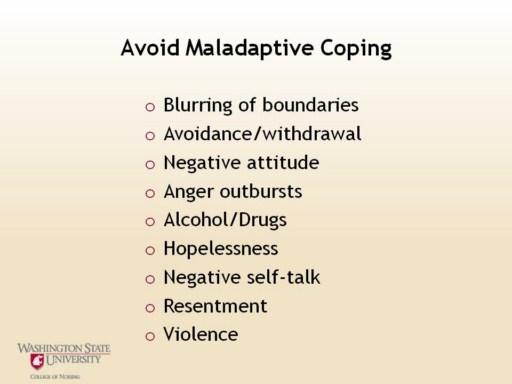| front |1 |2 |3 |4 |5 |6 |7 |8 |9 |10 |11 |12 |13 |14 |15 |16 |17 |18 |19 |20 |21 |22 |23 |24 |25 |26 |27 |28 |29 |30 |31 |32 |33 |review |
 |
Blurring of boundaries: There are no definitive lines between adaptive and maladaptive coping categories. For example, seeking social support is considered adaptive if it is sought from friends, peers, family, or clergy. However, if a nurse was to share their personal problems with their patients it would be a maladaptive blurring of boundaries. Avoidance can cause a dramatic reduction in fear and anxiety, which is rewarding. This is what is referred to as instrumental conditioning (Southwick, 2007). Hiding from our fears may lessen our immediate anxiety, but it won’t extinguish it. Therefore voidance is maladaptive because the stressful situation remains unresolved. That is what exposure therapies are about, staying with a fear to give the patient a sense of control. Alcohol could be beneficial if a person were to have a glass of wine before bedtime to help them unwind, but too much can disrupt sleep architecture. Alcohol is detrimental if a person spends money they do not have, they miss work because of a hangover, if it creates marital or legal problems, etc. Alcohol is also associated with sexual aggression and assault. Illicit drugs cause many of the same problems as alcohol, but also the user associates with criminals and puts the user at risk for serious legal harm. Violence places the person at risk for physical or legal harm. |